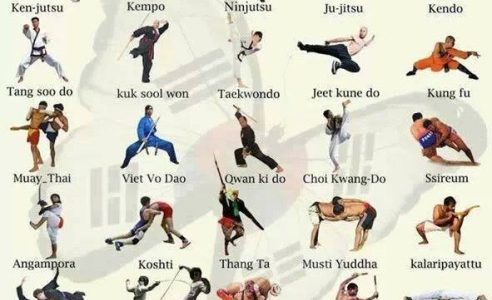Exactly How Do The Discipline-Centered Strategy Of Conventional Martial Arts And The Competition-Driven Nature Of Contemporary Battle Sporting Activities Differ? Discover The Significant Differences That Can Shape Your Experience
Exactly How Do The Discipline-Centered Strategy Of Conventional Martial Arts And The Competition-Driven Nature Of Contemporary Battle Sporting Activities Differ? Discover The Significant Differences That Can Shape Your Experience
Blog Article
Web Content Written By-Camp Hovgaard
When you consider martial arts, do you lean much more towards the standard techniques or the modern-day battle sports? Each path provides special advantages and experiences, shaped by their approaches and training methods. Standard martial arts stress personal development and technique, while contemporary battle sports focus on competitors and performance. Understanding these differences can lead you in selecting the right strategy for your journey. However just how do these differences show up in training and viewpoint?
The Ideology and Background Behind Standard Martial arts
While many individuals link martial arts with physical combat, the philosophy and background behind standard martial arts run much deeper. You'll discover that these disciplines stress individual growth, self-control, and respect.
Originating from old techniques, conventional martial arts were usually created for Self-Defense and spiritual advancement. They embody concepts such as balance, harmony, and self-constraint, directing experts beyond mere fighting skills.
As you educate, you'll not just find out methods but likewise get insights into the society and worths that shaped these arts. Link Website and customs, usually passed down with generations, foster a feeling of community and belonging.
The Competitive Nature of Modern Combat Sports
Modern combat sporting activities have actually changed the landscape of martial arts into an extremely competitive field, where professional athletes challenge in an examination of ability, method, and endurance.
You'll discover that competitors are typically organized with stringent regulations and policies, making sure fair game and safety and security. These occasions draw in big target markets, fueling the exhilaration and strength of matchups.
Professional athletes educate rigorously, not just for physical prowess yet additionally for mental durability, knowing that every information counts in the ring. The adrenaline thrill throughout competitions is apparent, as fighters push their restrictions to assert triumph.
Fans appreciate the athleticism and virtuosity entailed, making contemporary battle sports a thrilling spectacle that continues to advance and astound enthusiasts all over the world.
Training Methods and Techniques: A Relative Analysis
The competitive ambience of contemporary battle sports needs innovative training approaches that vary significantly from traditional martial arts.
In contemporary training, you'll focus on specific techniques, sparring, and conditioning, typically utilizing drills that imitate genuine battle situations. You'll see an emphasis on measurable performance and frequent competitors to evaluate your abilities.
In contrast, conventional martial arts prioritize kinds, katas, and thoughtful teachings, often stressing technique and respect over competition.
Training is typically much less extreme and may involve repetitive technique instead of real-time sparring.
While both techniques build ability and physical fitness, contemporary battle sports give a much more vibrant and versatile training setting, preparing you for prompt difficulties in the ring or cage.
Select the course that lines up with your objectives and interests.
Final thought
In choosing in between traditional martial arts and modern fight sporting activities, it actually comes down to what you value many. If you're looking for personal development, self-control, and a sense of area, traditional arts might be your finest fit. But if go now thrive on competition and real-time obstacles, modern fight sports could be the means to go. Eventually, both paths offer unique advantages, so it's all about aligning your training with your individual objectives and passions.
